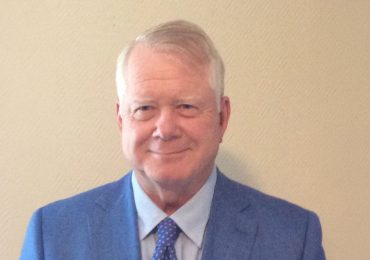Why does money—digital, immediate, and boundless in concept—still crawl through archaic systems designed for a world of paper ledgers and end-of-day tallies? That is the question Hatim Kapadia found himself asking more than a decade ago as he examined the gaps in the very systems meant to keep the global economy running. Kapadia, an engineering veteran of over 21 years, has built a career on tackling that problem head-on: transforming legacy infrastructure into lean, scalable systems that support real-time financial operations.
Hatim Kapadia operates at a pivotal intersection of legacy code and modern expectation. The financial world is evolving, with customer expectations shifting toward instantaneous, digital-first experiences. Institutions, however, remain tied to technologies that were never meant to support such demands. Kapadia’s mission is clear: close that gap and build the systems that tomorrow’s banking will depend on.
Laying the Groundwork: A Career of Practical Transformation
Hatim Kapadia’s journey began at Infosys and later continued at Syntel, where he developed scalable financial software solutions and led strategic efforts to modernize merchant payment systems. Early in his career, he focused on streamlining quality assurance processes and leading large cross-functional teams responsible for test automation and performance evaluation.
At Infosys, Kapadia contributed to building and optimizing high-performance transaction workflows. He worked on enhancing database operations using DB2 and focused on writing efficient code modules that could handle large volumes of financial data without compromising on speed or accuracy. These contributions enabled financial institutions to process transactions more reliably during a time when the fintech sector was beginning to shift away from monolithic systems.
At Syntel, he took on larger responsibilities. Kapadia led efforts in test data management and end-to-end validation frameworks for merchant payments. His work on implementing early regression testing tools allowed engineering teams to transition systems with fewer disruptions, reducing rollout times while improving system integrity. These achievements laid a solid foundation for his future contributions in real-time payment modernization.
From Batch to Real Time: Rewiring the Foundation
Hatim Kapadia’s experience in legacy environments became a catalyst for a pivotal breakthrough: transitioning end-of-day batch processing systems into real-time transaction environments. This shift enabled intra-day settlements, drastically reducing operational delays and aligning institutions with the needs of modern commerce. With global digital payments projected to exceed $14 trillion by 2030, these innovations are timely and essential.
“Financial platforms and systems do not just need to be faster,” Hatim Kapadia explains. “They need to be smarter, safer, and ready to evolve with every shift in customer behavior or regulation.”
He also developed a regression testing framework that reduced maintenance costs by 75 percent year-over-year. The framework automated the testing of legacy codebases during upgrades, preserving stability while accelerating the deployment of new features. The combination of real-time capability and robust, automated testing became a repeatable model for other institutions seeking scalable modernization.
Engineering Trust at Scale
Speed without security is a hollow win in finance. Hatim Kapadia’s focus has expanded to fraud detection, data consistency and system resilience. He incorporates machine learning models to proactively identify fraudulent activity within transaction streams, ensuring protection without sacrificing performance.
“A faster system without fraud protection is like a race car with no brakes,” he says. “We are designing for velocity and control.”
Kapadia also implemented synchronization strategies for in-memory computing environments, including proactive data grid warm-ups and reactive synchronization mechanisms. These systems maintain data consistency across distributed components. This helps financial institutions manage both scale and trust.
His work has drawn attention across the financial services sector. In 2024, Kapadia received the Man of Excellence Award from the Indian Achievers’ Forum, recognizing his role in transforming critical infrastructure. He has also served as a judge for the Globee Awards in Technology and Artificial Intelligence, contributing his expertise to evaluate forward-thinking solutions in fintech.
The Road Ahead: Intelligence, Integration and Influence
Hatim Kapadia is not resting on past achievements. He is currently pursuing a Master of Science in Business Analytics, expanding his understanding of data-driven decision-making. His long-term goal is to integrate intelligent systems capable of adapting in real time with next-generation financial platforms.
His vision includes widespread adoption of distributed ledgers, real-time authorization engines and predictive compliance systems. These ideas are not abstractions in his mind; they represent a future of finance grounded in pragmatic engineering.
Kapadia’s influence is expanding beyond individual projects. Mid-sized institutions are consulting financial platforms and frameworks derived from his work, using them to modernize their systems without undergoing costly overhauls. This speaks to the clarity and practicality of his methods and the urgency of the problems they solve.
“You cannot modernize by simply moving faster,” Kapadia reflects. “You have to build with discipline. What we are doing is not just engineering. It is rebuilding trust in what modern banking can deliver.”
Hatim Kapadia’s story is not solely about one individual’s success. It is a reflection of how engineering discipline, coupled with strategic vision, can reshape financial systems that once seemed immovable. His work offers a roadmap for others in the industry—one built on clarity, resilience and purpose.
















